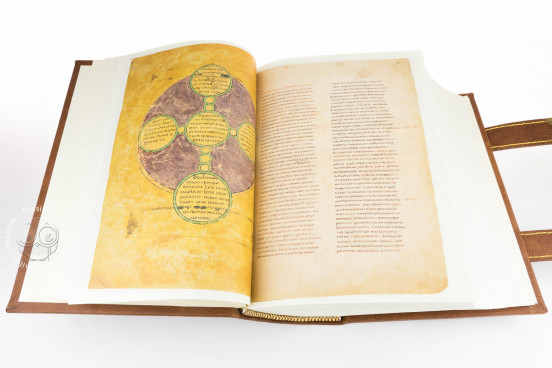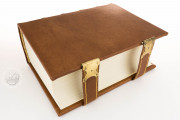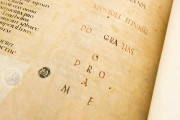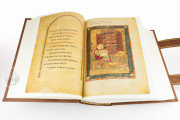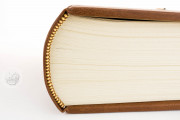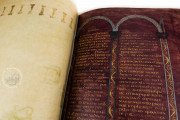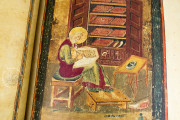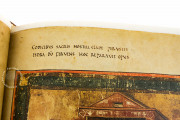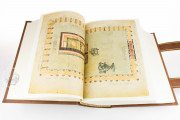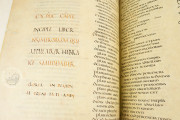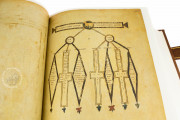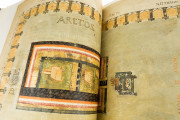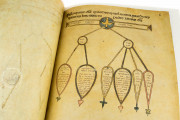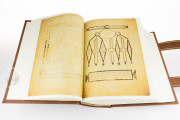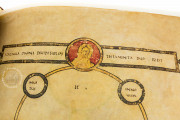The Codex Amiatinus is one of three bibles created in the twin Benedictine monasteries of Wearmouth-Jarrow in the Anglo-Saxon kingdom of Northumbria and is the oldest surviving copy of the complete Vulgate Latin Bible. Likely modeled on the lost Codex Grandior of Cassiodorus, the enormous tome was offered by Abbot Ceolfrith as a gift to Pope Gregory II. The book is the work of several scribes writing in Roman uncial and at least one illuminator. It is a product of perhaps the most influential scriptorium in the pre-Carolingian world and is a stunning example of the late Antique style produced in what was at the time the farthest reaches of Christendom.
Named for the Abbey of San Salvatore on Monte Amiata, the book was thought to have been made in Italy until the late 1880s. Among the over 1000 folios are two full-page illuminations and a prologue of golden script on a purple ground. Its preservation of the complete text of the early Christian Latin bible and the influence of late Antique style on Insular and Carolingian art make the Codex Amiatinus one of the most important books produced in early medieval England.
Oldest Surviving Complete Vulgate Bible
The Codex Amiatinus preserves the oldest complete version of the text of the pre-Carolingian Latin Vulgate bible and is an essential record for scholars of biblical history. The book also contains two full-page illuminations. The first precedes the Old Testament and is a portrait of Ezra writing in his study. The composition is similar to the seated author portraits more commonly used to depict the Evangelists in gospel books.
The second is an image of Maiestas Domini. Christ sits enthroned flanked by two angels in a framed roundel surrounded by the Evangelists, who are accompanied by their symbols. The pink and blue gradients in the background are reminiscent of miniatures in late Antique books. Like those works, there is little textual decoration and the arcades embellishing the canon tables and prologue are minimal and refined.
Innovation and Classicism in Northumbria
That it was once mistaken for Italian demonstrates the skill with which the remote monastic community of Wearmouth-Jarrow duplicated the late Antique style of the numerous books brought back from Rome by the abbots Benedict Biscop and Ceolfrith in the latter seventh century.
The use of Roman uncial and per cola et commata, beginning a new line for each phrase or sentence, was combined with the Insular practice of adding spacing between words making a text that preserved the appearance of earlier Roman manuscripts while improving the functionality. This practice continued into the Carolingian period and became standard in Western manuscripts.
A Gift for Pope Gregory II
A dedication (later altered to credit Peter of the Lombards) written under a simple arch states, “I Abbot Ceolfrith from the farthest reaches of the Angles send pledges of my devoted affection.” Although Ceolfrith died in 716 on the journey to deliver the gift, a letter of thanks from the recipient, Pope Gregory II, indicates it was received warmly.
By the ninth century it was kept at the Abbey of San Salvatore on Monte Amiata and is recorded in the library there in 1036. In 1796 it moved to the Laurentian library in Florence.
We have 1 facsimile edition of the manuscript "Codex Amiatinus": La Bibbia Amiatina facsimile edition, published by La Meta Editore, 2003
Request Info / Price
